In the realm of food, Spain has given us plenty to savor, such as Arroz Con Pollo and the Burnt Basque Cheesecake. In this blog, we’ll be looking at another integral part of Spanish cuisine: Spanish tapas. But what are Spanish tapas, exactly?
We will answer that—and give you seven you should give a try if ever you find yourself wandering into a tapas bar. Let’s get to it, shall we?
So… What are Spanish tapas?
So, what ARE Spain tapas? First, they’re not what we Filipinos know as “beef tapa.” If you want that, you can enroll in TBA’s All-Natural Meat Processing class.
Tapas are Spanish food that are generally served on small plates in bars and restaurants. There are hot and cold tapas, and they can also be composed of simple dishes such as olives or nuts or more complex ones such as croquetas or tortilla española.
According to Wikipedia, the word “tapas” comes from the Spanish verb “tapar,” which means “to cover.” Apparently, the tradition of serving tapas began when bar patrons would place a small plate of food over their drink to keep it from becoming fly-covered.
Another way of looking at tapas is the view of Colono Gourmet. In their article, they mention that The Real Academia Española de la lengua defines a tapa as “A small portion of food served as an accompaniment to a drink”. And apparently, in many areas of Spain, it used to be a custom to offer some food when anyone ordered, to increase the possibility of the person ordering more drinks! Nowadays, this custom has almost disappeared, and only in some regions is this tapa still offered free of charge with a drink.
It is common for the Spanish to go out for a “tapas crawl”—their version of bar hopping—after work or on weekends to try various dishes and experience a city’s different flavors. Ultimately, tapas are an important part of Spanish culture and cuisine and are often associated with socializing and spending quality time with loved ones.
Great, but what is the origin or history of tapas?
The origins of tapas… ah, there are so many stories! Let’s take a look at some of them:
- One story goes that King Alfonso X of Castile decreed that each drink should be accompanied by a small serving of food. This measure was intended to moderate alcohol consumption among his subjects and avoid rowdiness. This practice gradually gained popularity across Spain, leading to the widespread adoption of tapas as a fundamental element of Spanish culture and gastronomy.
- Another story associated with King Alfonso X is one where he was sick. While recovering, the King could only eat and drink small amounts. After becoming healthy once again, he made a decree that all drinks should be served with something to eat.
- There’s another story that involves King Alfonso, but this time, it’s King Alfonso XIII. When he went to Cadiz and stopped at a tavern, it was pretty windy. The bartender put a slice of ham on top of his drink so that dust wouldn’t get in. The King loved this so much that he ordered another drink.
- According to the website Camino, there are many different explanations about the origin of traditional Spanish tapas, many of which involve medieval kings and other historical figures. Most accounts claim it originated in Andalucía, but many other different regions of Spain all claim to be the birthplace of this popular Spanish tradition of delicious plates of food.
No matter which story you believe, we can all agree that tapas are amazing to eat and must be tried! And speaking of tapas to try…
Seven Spanish Tapas You Have To Try
Now, on to the main course! There are plenty of them, but these dishes should serve as a great introduction to Spain’s diverse and vibrant food culture. Eat them with a glass of wine for maximum enjoyment!
1. Patatas Bravas: A Spicy Love Affair

Indulge in the fiery romance of Patatas Bravas, a classic and staple dish in tapas cuisine. Here, crispy fried potatoes meet a seductive blend of spicy tomato sauce and creamy aioli. This beloved Spanish dish marries contrasting textures and bold flavors, creating a tantalizing love affair on your palate that leaves you craving more with each bite.
2. Gambas al Ajillo: Sensual Seafood Delight
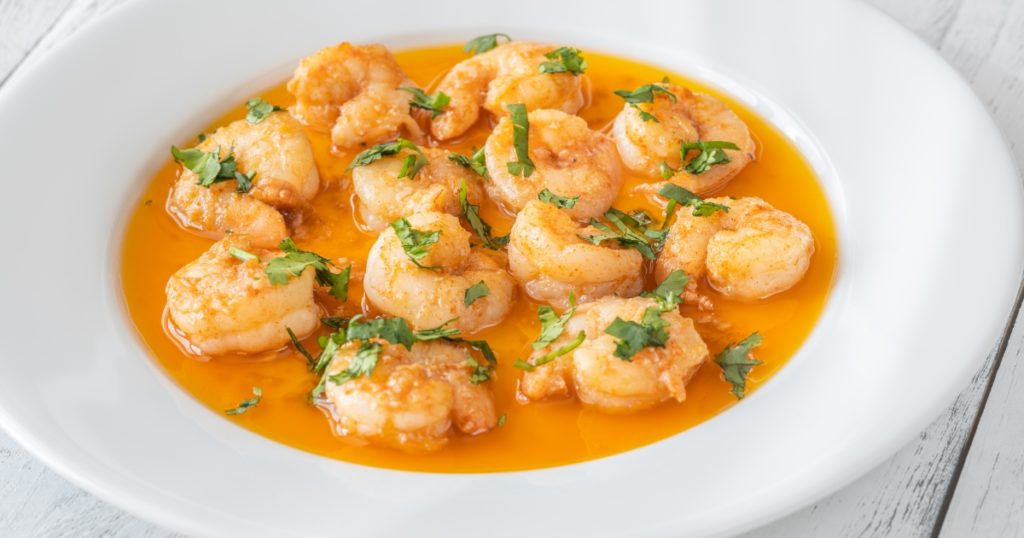
Experience the coastal charm of Spain with Gambas al Ajillo, a garlic lover’s dream where shrimp are sautéed in a fragrant mix of garlic and olive oil, often accompanied by a spicy kick. Let the seductive aroma transport you to a seaside escape as this seafood delight dances on your palate, awakening a sense of pleasure with every mouthful.
3. Jamon Iberico: A Symphony of Cured Elegance

Savor the essence of Spanish heritage with Jamon Iberico, a world-renowned cured ham that embodies the pinnacle of flavor. Each delicate slice offers a journey through time, enchanting your senses with its rich flavor and melt-in-your-mouth texture. This staple of Spanish cuisine will definitely leave a lasting impression of culinary excellence.
No Jamon Iberico? Look for Jamon Serrano. Serrano ham uses a different pig, but it’s also pretty good!
4. Tortilla Espanola: Homely Hug in Every Bite
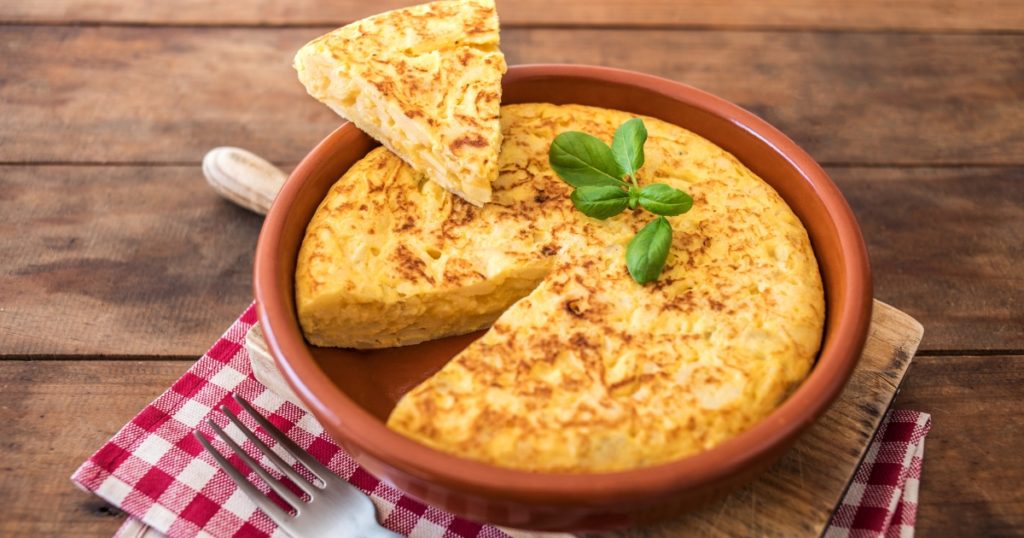
Experience the comfort of Tortilla Espanola, a thick and hearty Spanish omelet that feels like a warm hug from home. This classic hot tapas dish, made with tender fried potatoes and onions, offers a taste that is quintessentially Spanish. Perfect for any time of the day, it promises a delightful journey to the heart and hearth of Spain’s culinary tradition.
5. Pulpo a la Gallega: Tender Embrace of Octopus
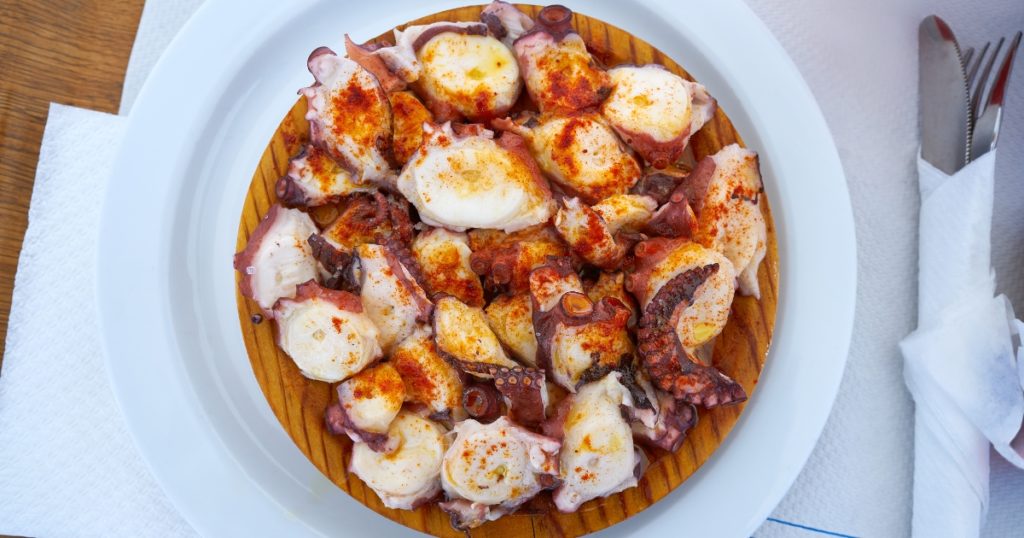
Like octopus? You should try Pulpo a la Gallega, a traditional dish hailing from the region of Galicia in northwestern Spain. This Galician specialty, often served as a Spanish tapa, showcases perfectly cooked octopus, tender to the touch, and lovingly drizzled with olive oil. A sprinkle of Spanish smoked paprika and a bed of boiled potatoes complete this iconic dish, making it a beloved and emblematic representation of Spanish tapas.
6. Croquetas: Crispy Comfort Bites
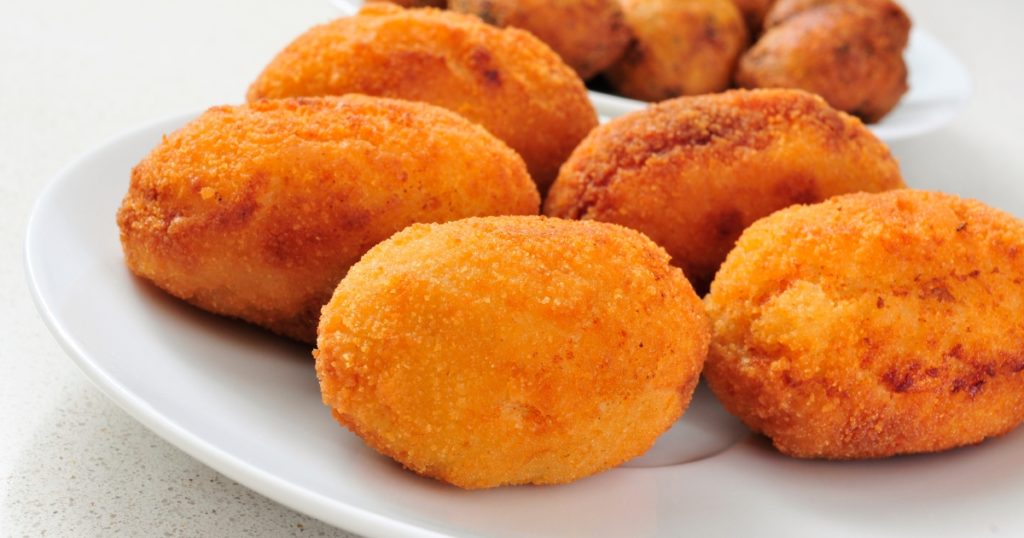
Savor the crispy comfort of Croquetas, a staple of Spanish home cooking that combines a golden breadcrumb exterior with a heartwarmingly creamy interior. These fried breaded rolls, filled with a rich and flavorful mixture of ham, chicken, or fish, offer a journey into the essence of Spanish culinary tradition. Each bite not only invokes a sense of nostalgia but also delivers an irresistibly delicious experience, making Croquetas a beloved and satisfying choice for any tapas lover.
7. Salmorejo: Velvety Symphony of Tomatoes
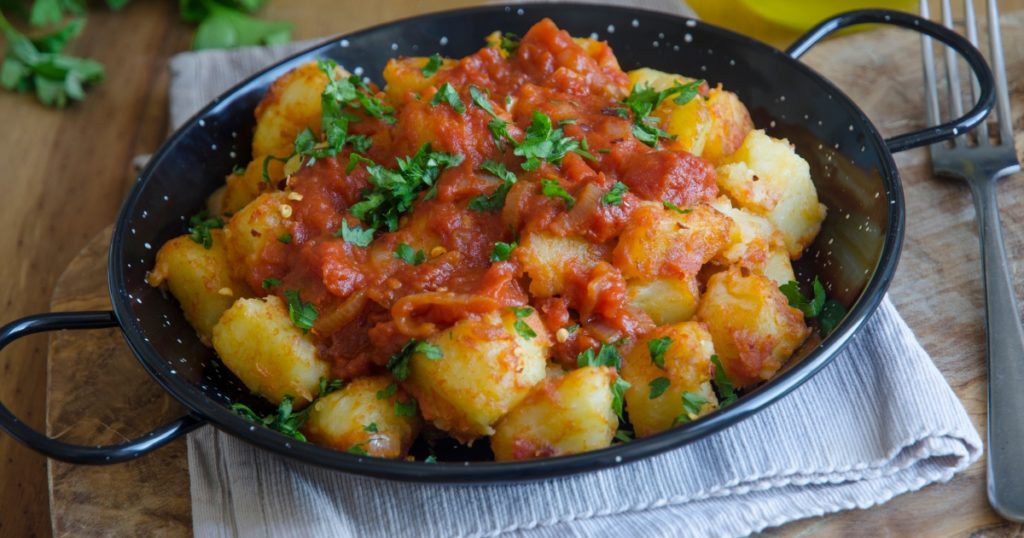
Conclude your emotional culinary journey with Salmorejo, a velvety symphony of tomatoes. This chilled soup, rich in flavor and history, provides a refreshing and satisfying finale to your exploration of Spanish tapas.
Want to make Spanish Tapas at the comfort of your home?
Thinking about making Spanish Tapas at home? It’s a great idea! Tapas are perfect for a relaxed get-together since they’re easy to make. Everyone can try different tasty dishes without you spending too much or making too much food.
So, why not bring the fun and flavor of Spanish tapas to your own kitchen?
If you’re wondering how to do that, well, we have some good news for you: we have a class by Chef Him Uy De Baron at The Bailiwick Academy that can help you do this. Its name?
In this easy-to-follow class by Chef Him, you can easily dive into the world of Spanish cuisine and learn his versions of some classic Spanish recipes:
- Spinach and Jamón Croquetas: golden bites with a crispy outside and a creamy mix of béchamel, spinach, and ham inside.
- Tortilla de Patata con Chorizo: a hearty Spanish omelette packed with thinly sliced potatoes and spicy chorizo sausage—it’s full of flavor!
- Fideua con Mariscos: similar to paella but with short noodles, this dish combines perfectly cooked noodles with a variety of fresh seafood
- Sangria: this refreshing drink is the perfect pairing for your tapas spread
With clear steps for ingredient identification and cooking procedures, even beginners can create these delicious dishes. Get ready to enjoy a taste of Spain right at home: sign up at The Bailiwick Academy today!
—
Keep coming back to The Bailiwick Academy blog for more baking and cooking tips, kitchen tricks, and much more!

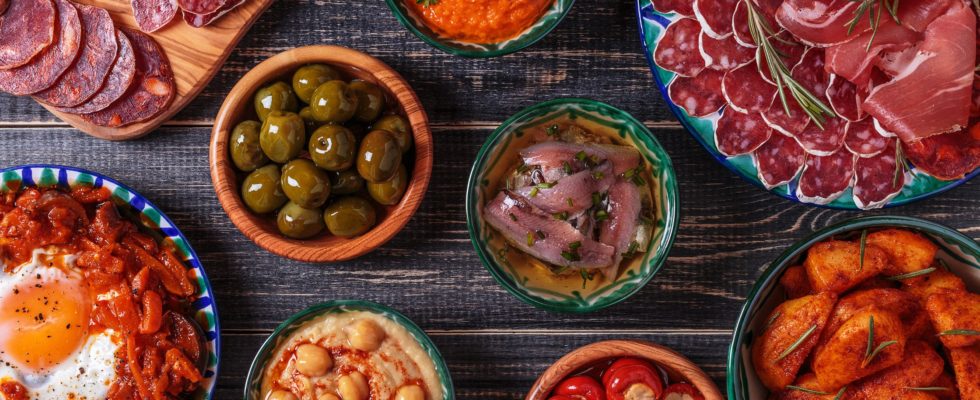
Pingback: What is Mediterranean-Style Food? - Online Baking and Cooking Classes - The Bailiwick Academy